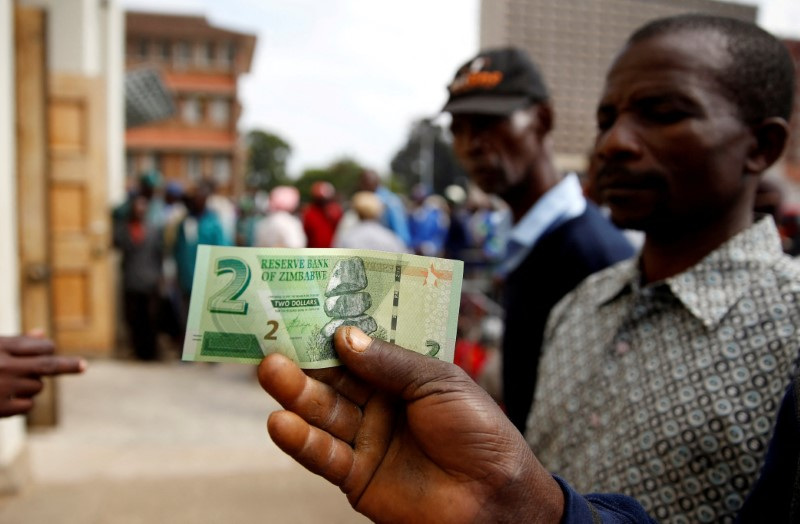Zimbabwe once considered the “breadbasket of Africa,” has faced a tumultuous economic history that culminated in a severe collapse. The journey from prosperity to economic ruin was marked by a series of ill-advised policies, fiscal irresponsibility, and political turmoil. This article delves into the detailed timeline of Zimbabwe’s economic collapse, covering key events that contributed to the nation’s financial decline.
1997 – The Prelude to Financial Turmoil
In 1997, Zimbabwe took a fateful step towards economic instability. President Robert Mugabe, facing pressure from war veterans, authorized Finance Minister Herbert Murerwa to disburse ZW$50,000 each to over 50,000 war veterans, amounting to ZW$3.5 billion. This decision, made without budgetary considerations, set the stage for fiscal recklessness.
Chaotic Land Grab and Fiscal Indiscipline
Following the chaotic land redistribution program, which saw over 1,400 productive farms earmarked for redistribution, Zimbabwe faced international backlash. The government’s response, coupled with foreign reserves dwindling to a month’s worth of imports, triggered panic among speculators. In an attempt to stabilize the economy, the government injected US$15 million, but it only exacerbated the situation.
Also Read: Mazowe: Your Ultimate Guide to Zimbabwe’s Serene Gem
Black Friday and Nationwide Riots (1997-1998)
November 14, 1997, marked “Black Friday” when the Zimbabwean dollar plummeted by 72%, accompanied by a 46% stock market crash. Simultaneously, a national blackout occurred, intensifying the crisis. In January 1998, nationwide riots erupted due to a surge in basic goods’ prices, further aggravating the economic turmoil. The military was deployed to quell unrest.
DRC War and Forex Shortages (1998-1999)
Zimbabwe’s involvement in the Democratic Republic of Congo (DRC) war strained its finances, with estimates suggesting daily expenses of US$1 million. By 1999, forex shortages were pronounced, leading to defaults on foreign debts. The IMF withdrew funding, prompting stringent exchange controls and an inflated Zimdollar rate.
Cabinet Reshuffling and RBZ Printing Money (2000-2001)
Amid economic protests, Finance Minister Herbert Murerwa was reshuffled. His successor, Simba Makoni, faced pressure to devalue the Zimdollar. In 2001, Zimbabwe introduced a $500 note, followed by another within weeks. The economy further spiraled into chaos.

A Deep Dive into The Factors Behind Zimbabwe’s Economic Collapse
Gideon Gono’s Appointment and the Printing Spree (2003)
Gideon Gono’s appointment as RBZ governor in 2003 marked a turning point. The introduction of bearer cheques and escalating inflation prompted a desperate attempt to reassert control. However, widespread looting and fiscal mismanagement persisted.
Hyperinflation and Introduction of Trillion-Dollar Notes (2008-2009)
In 2008, Zimbabwe experienced hyperinflation, reaching an alarming 500 billion percent. The Zimdollar became virtually worthless, leading to the introduction of a $100 trillion note in 2009. The economic landscape shifted, with the country effectively dollarizing.
MDC’s Entrance and Economic Decline (2009-2013)
The Government of National Unity (GNU) formed in 2009 saw the demonetization of the Zimdollar. While hyperinflation ceased, the economy struggled, and the country slipped into deflation. In 2014, the RBZ authorized a range of foreign currencies alongside the US dollar.
Bond Notes and the Disappearance of the US Dollar (2016-2017)
In 2016, the RBZ introduced bond notes, ostensibly at par with the US dollar. The move aimed to ease economic trauma but was met with skepticism. By 2017, the US dollar and bond notes disappeared from the market, signaling a return of economic uncertainty.
Gold Mafia and Ongoing Concerns (2023)
Recent revelations, such as the Gold Mafia documentary, shed light on illicit activities within the Zimbabwean government. Allegations of gold smuggling and underhanded deals raise concerns about financial transparency and accountability, adding another layer to the nation’s complex economic history.



